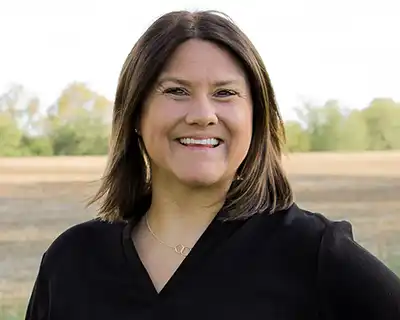For regenerative agriculture systems to be effective and scalable on U.S. farms and ranches, it’s important to get past the word of the day and focus on positive outcomes informed by farmers’ lived experiences, says Anjali Marok, interim global responsibility leader at Corteva Agriscience.
Ahead of a free virtual event on regenerative agriculture happening from 10 to 11 a.m. CT Nov. 17, 2021, for farmers and other agri-food value chain leaders, Marok shared how Corteva is thinking about regenerative agriculture systems—and what it will take to make producers whole and address consumer needs at every step of the journey. To learn more about this event and to register, scroll to the end of this article.
What is regenerative agriculture, and how does it differ from conservation or sustainable agriculture? Is there broad agreement on a definition? If not, do we need such agreement?
Within Corteva, we frame regenerative agriculture as a farming system that’s designed to optimize profitability and sustainability while replenishing and improving natural resources like soil, water and biodiversity to ensure that production is resilient for farmers, their communities, and society.
What that means for each farmer is different, because every acre is unique and farming systems differ around the world. We are focused on achieving outcomes that meet the farmer’s goals while replenishing and nourishing their natural resources. Regardless of what we call it, the outcome is what’s important. We have to work at those solutions together and support farmers in achieving this outcome.
I see broad agreement on the outcome and on what we as an industry need to achieve: to support farmers to ensure we are protecting a resilient food system for generations to come. When we’re all working on that outcome, we can get beyond the words regenerative agriculture.
Optimizing environmental, economic and social sustainability to improve natural resources for the future—that’s really what a regenerative system is all about.
What benefits are made possible with regenerative agriculture—for producers, the global climate, the environment, consumers?
There are both short-term and long-term benefits for regenerative agriculture, across the value chain, and specifically for producers. It really comes down to that balance of environmental, economic and social in the farming system that help protect yield and productivity.
For example, practices for regenerative agriculture can support a balance of biodiversity above and below the ground that critically supports crop growth and pest management. Other examples of beneficial outcomes for farmers include helping to conserve water and manage moisture season to season, and protecting against weed pressures.
Regenerative farming systems can also reduce greenhouse gases and store carbon. These practices are certainly enabling improvements to the quantity and quality of farm products, meeting consumer demand and creating a path to maintain farmer profitability by managing input costs and meeting current market needs.
Farmers take a multi-year view of their businesses, managing for resilient, profitable, long-term farming while reducing on-farm waste. They are managing and optimizing how they’re producing and maximizing potential production on each acre, keeping their land productive for longer in order to feed a growing population.
Farmers who have been recognized through Corteva’s Climate Positive Leaders Program have shared their successes after adopting these types of practices. One of the farmer winners of the Climate Positive Leaders Program, Wisconsin producer Brad Clark, has transitioned his farm to more climate positive practices. He recognized the need and implemented no-till, block planting and perennial vegetation practices on his operation, which includes crops such as wheat, corn and alfalfa.
While he has seen a $60 to $85 per acre reduction in costs while improving production with virtually no erosion, his efforts also positively impact the food value chain and work toward meeting the needs of consumers.
These are the stories that matter. These outcomes are what matter.
What will it take to see regenerative agriculture at scale in the U.S.?
The challenge to scaling regenerative agriculture in the U.S. comes down to the uniqueness of our American farming system. No two acres are the same. Climate zones, even across states, are difficult to compare. The path to achieving a meaningful difference starts with systems.
This includes supporting early adopters such as Brad Clark in purposeful system design, looking at agronomics and whole-farm systems guidance to support decisions that make sense for them to optimize profitability and sustainability.
We also need acceptable measurements of outcomes. Currently, these are very expensive. We must transition toward fair adoption costs because it is often so expensive for farmers to adopt regenerative systems, especially in the first three to five years. Opportunities include paying for stewardship performance, providing access to markets for regeneratively produced crops and compensating farmers for other ecosystem services they’re generating.
Continued validation and expansion of the scientific fact base is critical. There is a need for continued research. On a recent Corteva panel, Roger Wolf, Research Center for Farming Innovation director at the Iowa Soybean Association, spoke about the need to continue research on the yield impact of these management practices.
What do we know about what is in producers’ way to fully tapping into regenerative agriculture’s potential?
Farming is complex. To tap into the potential of regenerative agriculture, we must stay committed to providing the breadth of tools that support innovation for farmers and ranchers and what their farming systems need.
We must listen to farmers and learn from them. Ensuring their voice is represented is something we value and place a huge priority on, and our industry is looking at that as well.
What we’re learning is that these applied technologies and crop protection products—both synthetic and biological—are necessary tools for outcomes that optimize farmer profitability and also nurture the land. Digital tools can help see the farm as a system and support profitability by informing in-season decisions, taking that multi-season look, and making smarter and smarter decisions over time.
Research-as-a-service will provide technology and capability to provide support. Agronomic advice and training will help farmers with what they need and wish to understand. All of that needs to come together.
How can producers—and the agriculture industry—connect their regenerative practices to consumer expectations about food?
There is such a tremendous opportunity to connect farmers and their existing regenerative practices to consumers and their expectations about food. As an industry, we have the opportunity to amplify farmers’ voices and share their stories.
That’s one of the goals of our Climate Positive Leaders Program. We know consumer expectations are high. Consumers are increasingly invested in where and how their food is produced. We see an opportunity to continue to educate consumers on successful farming systems and share how we are learning from the challenges farmers are experiencing. That is as important as sharing successes.
Our research tells us that growers have a very compelling voice and that consumers have a high degree of trust in growers—they want growers to succeed.
We also recently established new business portfolios that set up formal relationships with food companies to help them solve complex problems and to meet consumer demands. This is another way we can advocate for growers and the technologies needed to produce safe, sustainable and affordable food.
What other comments would you like to make?
We talk a lot about new adoption of regenerative systems and the new work that needs to happen, and that conversation is important. But just as important is learning from those early adopters and the experiences they have had across one, two, three or more generations. We need to really serve that continuous improvement on their farms. It’s essential if we are going to learn as fast as we need to, to support farmers as fast as we need to, to keep up with the speed of change as the world turns.
These early adopter farmers have been doing the work. We need to learn from them about what they need, what is working for them and what isn’t working for them. We need to elevate their voices and learn from them so we can get past vocabulary and focus on solutions.
In my view, I don’t know that the farmer-consumer divide is as big a divide as some might think. We grapple with it because it’s complex. However, at the heart of the issue, farmers are the original stewards of the land and farm sustainably for their families and businesses. Consumers care about what they eat and what they feed their families. As I see it, our focuses are more aligned than not. We have lot to look forward to, if we can just say focused on the outcomes and work toward a resilient global food system.
____________________________________________________________________________
Register For Free Nov. 17 Regenerative Agriculture Virtual Event
Ahead of the 2021 Sustainable Ag Summit, you can hear more from Anjali Marok, interim global responsibility leader at Corteva Agriscience, and other regenerative agriculture leaders about the future of U.S. agriculture. Register for a free virtual dialogue developed by Corteva in collaboration with America’s Conservation Ag Movement titled, “Can Regenerative Agriculture Unlock The Connection Between Food Consumers And Agricultural Producers?” The event will be facilitated by Amy Skoczlas Cole, executive vice president of Farm Journal’s Trust In Food social impact division, and feature expert speakers including Marok and:
- Chris Adamo, vice president, federal and industry affairs, Danone North America
- Brad Clark, Wisconsin producer and winner of the Climate Positive Leaders Program
- Michael Doane, global managing director, The Nature Conservancy
- Steven James, senior director, Global Vegetable Oils Center of Excellence, PepsiCo
Don’t miss this free dialogue—click here to register. You can also submit advance questions to considered for the panel discussion to Nate Birt at nbirt@farmjournal.com



